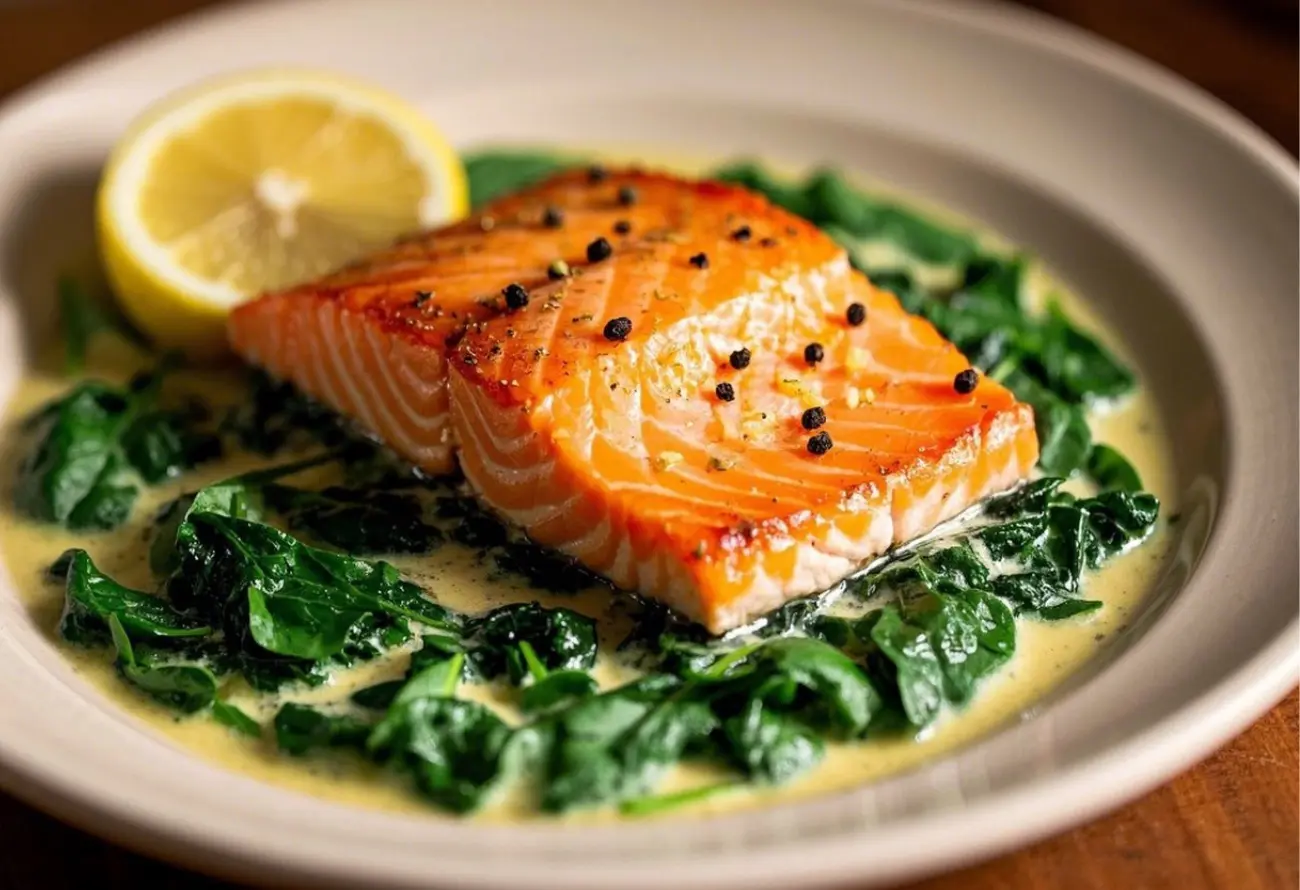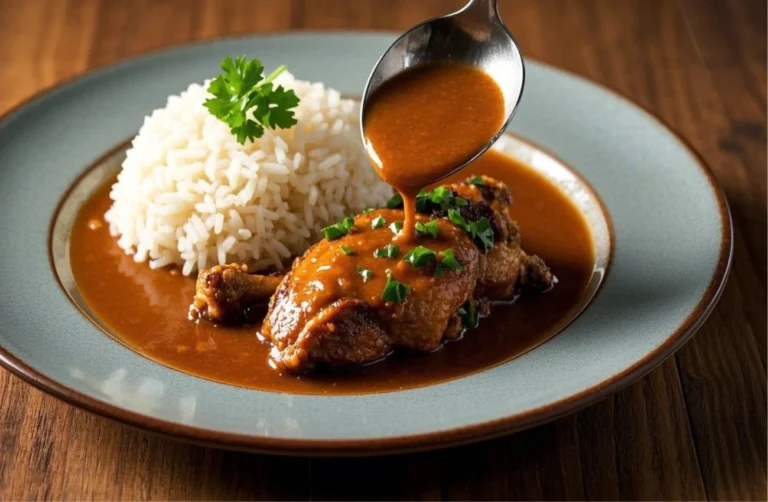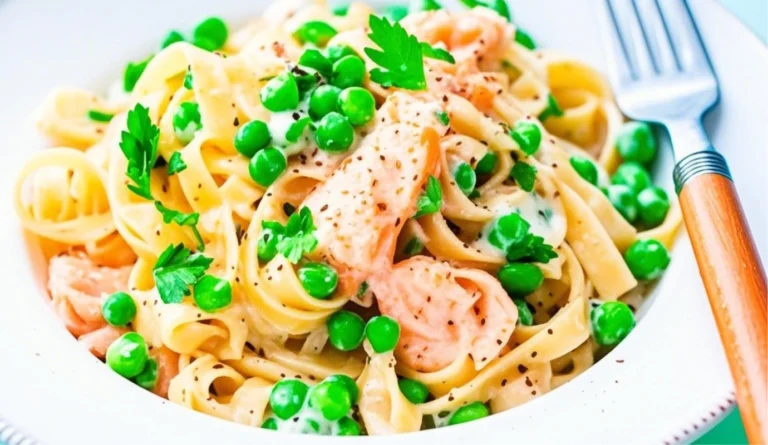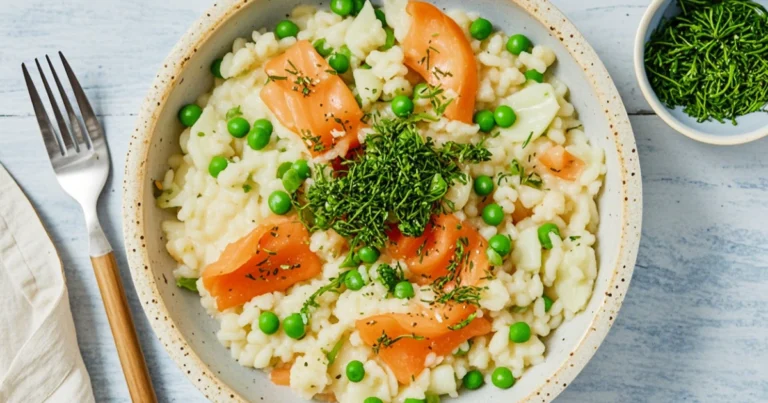Easy & Healthy Salmon and Spinach Recipe | Quick Dinner in 20 Minutes
Table of Contents
The kitchen clock reads 6:30 PM. Your stomach growls as you slump through the front door after another marathon workday. The thought of cooking feels like climbing a mountain, yet the delivery app on your phone promises another night of overpriced, underwhelming food. We’ve all been there—caught in that familiar tug-of-war between hunger, exhaustion, and the desire for something actually worth eating.
Three years ago, this was my nightly routine until I stumbled upon what I now consider the holy grail of weeknight cooking: a salmon and spinach recipe that transformed my relationship with home cooking. This isn’t just another quick meal; it’s the solution to the “too tired to cook but want something wonderful” dilemma that plagues busy professionals everywhere.
Within 20 minutes—less time than waiting for delivery—you’ll be sitting down to a restaurant-worthy plate that nourishes both body and soul. The gentle flakiness of perfectly seared salmon paired with vibrant, garlicky spinach creates a symphony of flavors that belies the dish’s simple preparation. This recipe doesn’t just feed you; it reminds you that extraordinary meals don’t require extraordinary effort.
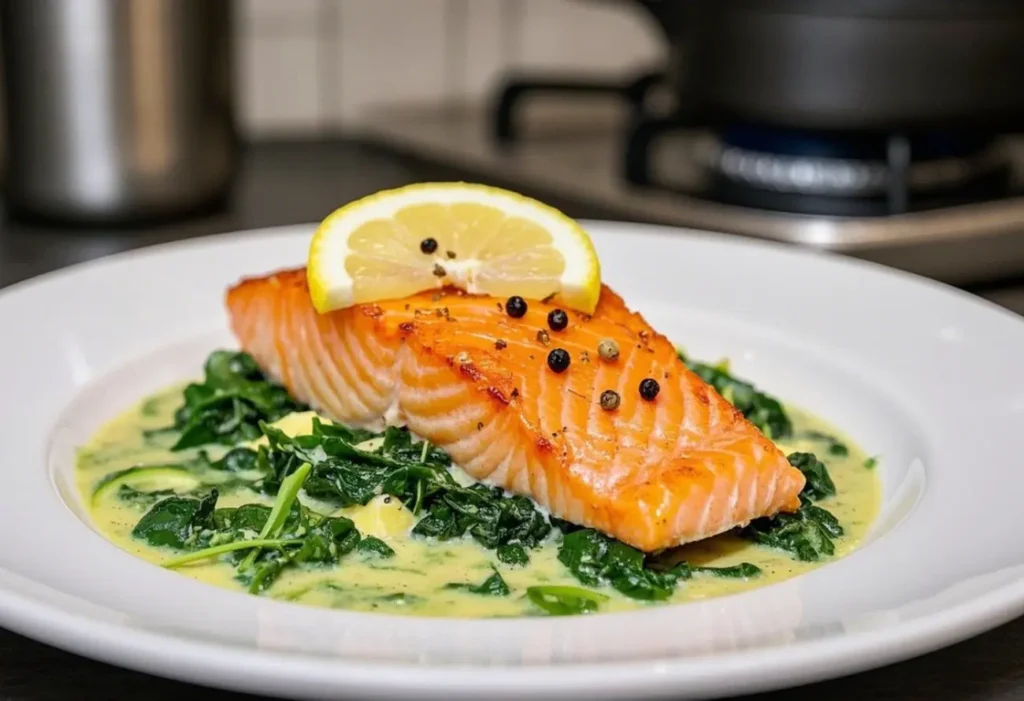
Why This Salmon and Spinach Recipe Will Become Your Go-To Weeknight Dinner
When life demands efficiency without compromise, this salmon and spinach duo delivers spectacularly. Rich in omega-3 fatty acids, high-quality protein, and an abundance of vitamins, this powerhouse combination offers impressive nutritional benefits while satisfying even the most discriminating palates.
The beauty of this particular recipe lies in its streamlined approach. By focusing on quality ingredients and straightforward techniques, you’ll create maximum flavor with minimal fuss. The entire cooking process fits comfortably within 20 minutes—about the same time it takes to change into comfortable clothes and pour yourself a glass of wine after work.
For those navigating dietary restrictions, this recipe offers remarkable flexibility. Naturally gluten-free and low-carb, it easily adapts to paleo, keto, or Mediterranean eating patterns without modification. The basic template welcomes personalization, whether you’re increasing the garlic for extra zing or incorporating additional herbs from your garden.
Most importantly, this dish achieves that elusive balance between healthfulness and satisfaction. You’ll find no compromise here—just vibrant, clean flavors that leave you feeling nourished rather than deprived.
Ingredients You’ll Need for Salmon and Spinach Recipe
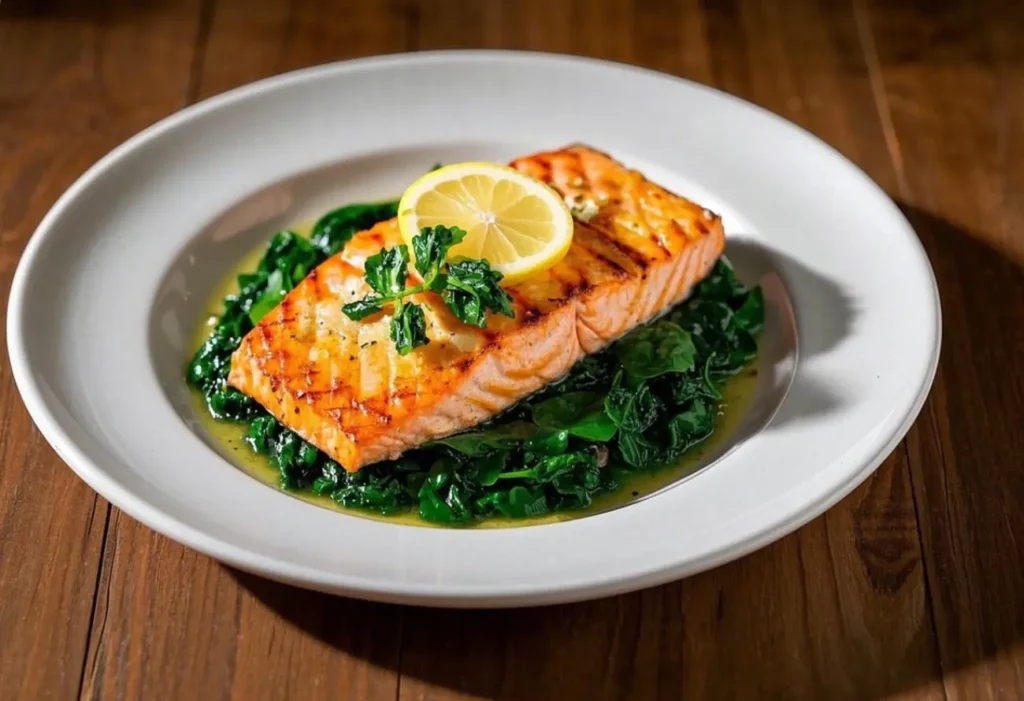
Main Ingredients
| Main Ingredients | Amount | Notes |
|---|---|---|
| Fresh salmon fillets | 4 (6 oz each) | Wild-caught preferred, but any variety works |
| Fresh spinach | 8 cups | Baby spinach needs no chopping |
| Garlic | 3 cloves | Freshly minced for best flavor |
| Lemon | 1 medium | Both juice and zest will be used |
| Olive oil | 2 tablespoons | Extra virgin recommended |
Seasonings
| Seasoning | Amount | Notes |
|---|---|---|
| Sea salt | 1 teaspoon | To taste |
| Black pepper | ½ teaspoon | Freshly ground |
| Dried herbs | 1 teaspoon | Dill, thyme, or Italian seasoning |
| Red pepper flakes | ¼ teaspoon | Optional, for heat |
Kitchen Equipment Needed for Salmon and Spinach Recipe
Before diving into preparation, gather these essential tools:
- Large skillet with lid (12-inch recommended)
- Flexible spatula for flipping salmon
- Cutting board
- Sharp chef’s knife
- Measuring spoons
- Microplane or zester for lemon
- Paper towels for drying salmon
- Tongs for handling spinach
Having everything within reach streamlines your cooking process, essential for maintaining the quick timeline this recipe promises.
Step-by-Step Preparation Instructions for Salmon and Spinach Recipe

1. Preparing Your Salmon
The foundation of this dish begins with properly prepared salmon. When shopping, look for fillets with bright, moist flesh and a clean, oceanic scent—never fishy. Wild-caught varieties typically offer superior flavor and nutritional benefits, though farm-raised works perfectly well.
Once home, unwrap your salmon and gently pat each fillet dry with paper towels. This crucial step removes excess moisture, ensuring a beautiful sear rather than a steamed finish. Allow the salmon to rest at room temperature for 10 minutes while preparing other ingredients—cold protein straight from the refrigerator tends to cook unevenly.
Season each fillet generously with sea salt and freshly ground pepper on both sides. For enhanced flavor, sprinkle dried herbs across the top of each piece. The seasoning should complement rather than overwhelm the salmon’s natural richness.
For even cooking, check each fillet for uniform thickness. If your pieces taper significantly at the ends, consider folding the thinner portions underneath to create more consistent thickness throughout.
2. The Quick Spinach Sauté Method
While many home cooks struggle with spinach preparation—often producing either a soggy mess or tough, stringy leaves—this method guarantees vibrant, flavorful results.
Begin by heating one tablespoon of olive oil in your skillet over medium heat. Add minced garlic and cook for approximately 30 seconds, until fragrant but not browned. Garlic burns quickly and develops bitterness, so maintain vigilant attention during this brief cooking window.
Next comes the seemingly impossible feat of fitting eight cups of spinach into your skillet. Rather than dumping all leaves in simultaneously, add them gradually in batches, using tongs to gently toss with the garlic-infused oil. Each batch will dramatically reduce in volume, making room for more.
The secret to maintaining spinach’s bright emerald color lies in brief cooking—no more than 2-3 minutes total. When properly prepared, the leaves should just wilt while retaining a slight resistance when bitten. Remove the spinach from the skillet and set aside, keeping it warm by covering loosely with foil.
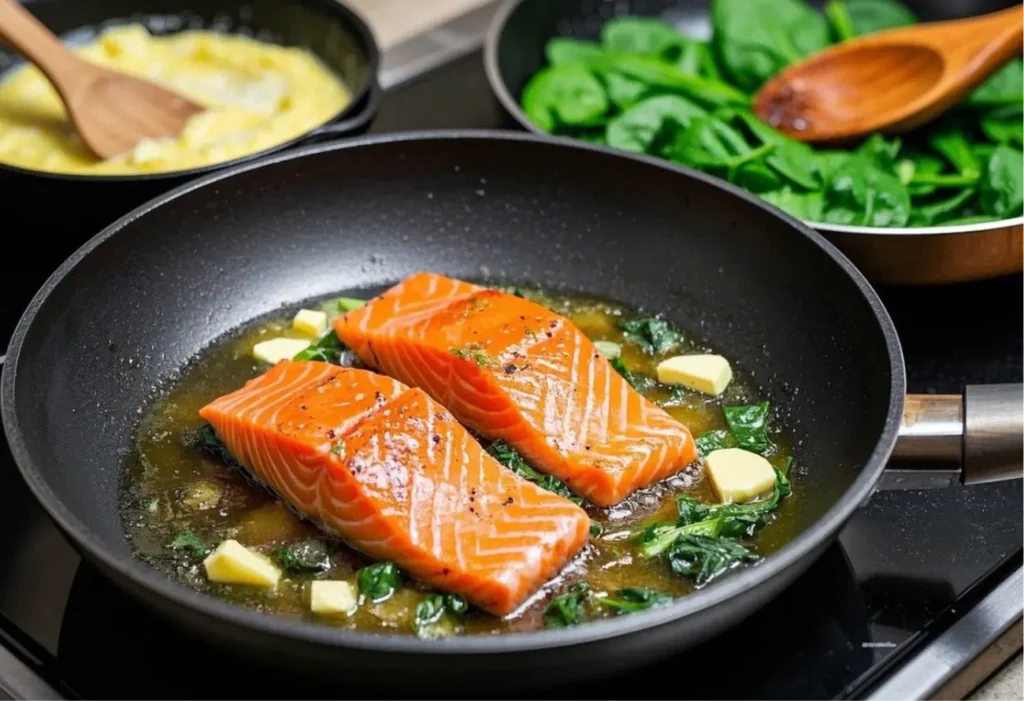
3. Bringing It All Together
With your spinach perfected and set aside, wipe your skillet clean with paper towels and return it to medium-high heat. Add the remaining tablespoon of olive oil and allow it to reach the point where it shimmers but doesn’t smoke.
Carefully place your seasoned salmon in the hot skillet, skin-side down if your fillets have skin. This initial contact should produce a satisfying sizzle—if not, your pan isn’t hot enough. Allow the salmon to cook undisturbed for approximately 3-4 minutes, developing a golden crust that adds tremendous flavor.
Using your spatula, gently flip each fillet. The salmon should release relatively easily from the pan; excessive sticking suggests either insufficient oil or attempts to flip too early. After turning, cook for an additional 2-3 minutes, depending on your preferred doneness and the thickness of your fillets.
Perfect salmon maintains a slightly translucent center—cooking to medium (125°F internal temperature) rather than well-done preserves moisture and flavor. For visual confirmation, look for flesh that flakes easily with gentle pressure but remains moist and slightly darker in the middle.
In the final minute of cooking, add a squeeze of fresh lemon juice directly over the salmon and reduce heat slightly. This brief acidic bath brightens flavors dramatically while completing the cooking process.
To serve, create a bed of the reserved garlicky spinach on each plate and top with a salmon fillet. Finish with a sprinkle of lemon zest across each portion for an aromatic flourish that elevates the entire dish.
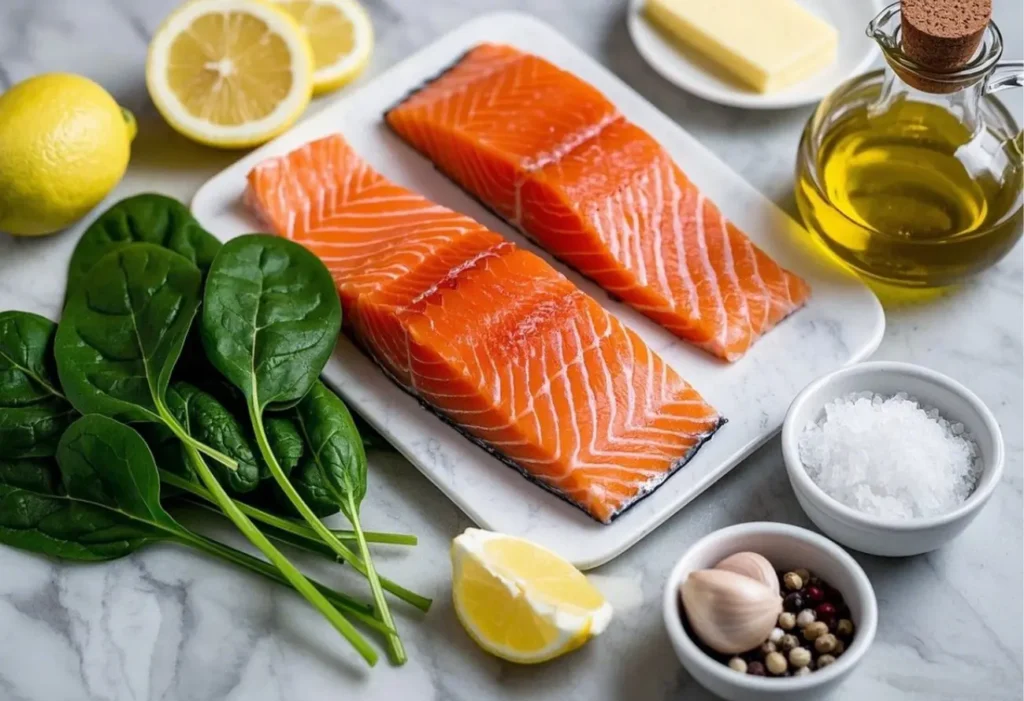
Nutritional Information
This powerful combination delivers impressive nutritional benefits per serving:
| Nutrient | Amount per Serving |
|---|---|
| Calories | 320 |
| Protein | 34g |
| Healthy Fats | 18g |
| Carbohydrates | 4g |
| Fiber | 2g |
| Vitamin A | 105% DV |
| Vitamin C | 25% DV |
| Iron | 20% DV |
| Omega-3 | 1,800mg |
Health Benefits of This Salmon and Spinach Recipe
Beyond its impressive flavor profile, this dish offers substantial health advantages worth considering.
The omega-3 fatty acids abundant in salmon play crucial roles in brain health and cognitive function. Recent research published in the Journal of Nutritional Biochemistry indicates that regular consumption of these essential fats may help reduce inflammation throughout the body and potentially lower risk factors associated with several chronic conditions.
Spinach contributes its own impressive arsenal of benefits. As one of the most nutrient-dense foods available, it provides lutein and zeaxanthin—antioxidants specifically beneficial for eye health. Its impressive vitamin K content supports bone health, while its nitrate levels may help reduce blood pressure according to findings from the Journal of Nutrition.
Together, these ingredients create a powerfully anti-inflammatory meal. Chronic inflammation underlies many modern health concerns, making regular consumption of anti-inflammatory foods increasingly important for overall wellness.
The protein content—34 grams per serving—supports muscle maintenance and repair, particularly valuable for active individuals or those focused on preserving muscle mass as they age. This substantial protein portion promotes satiety, helping you feel satisfied longer after eating.
For those monitoring carbohydrate intake, this meal’s naturally low-carb profile (just 4 grams per serving) fits seamlessly into reduced-carb eating patterns without requiring special adjustments or substitutions.
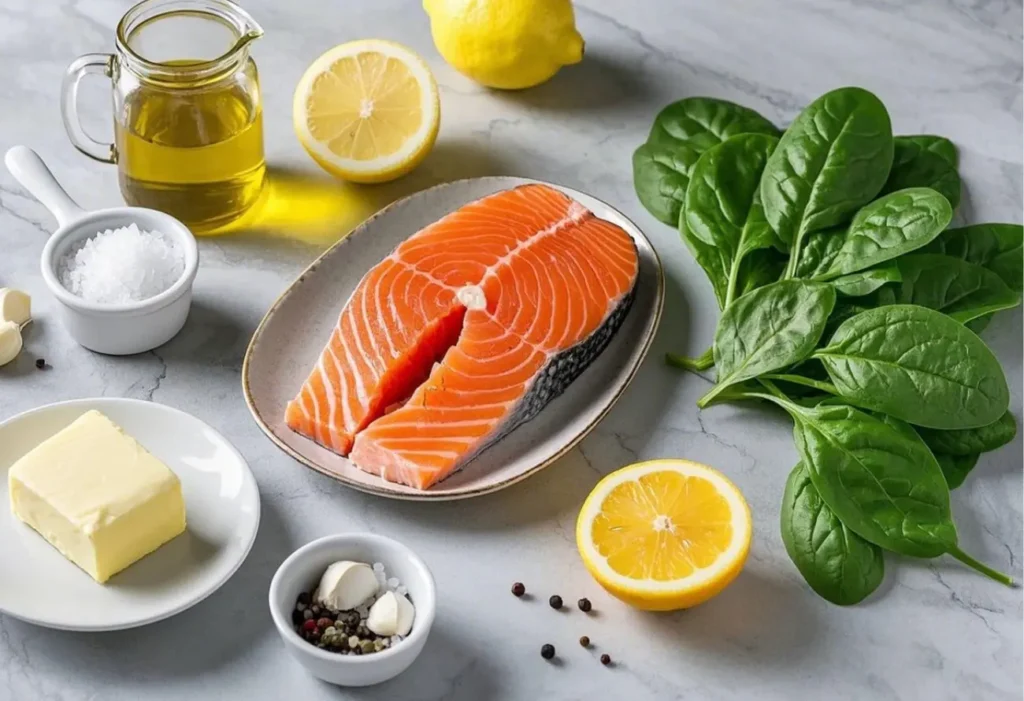
Variations to Try with Your Salmon and Spinach Recipe
While the classic preparation shines in its simplicity, consider these creative variations when you’re craving something different:
Creamy Garlic Version: After removing the cooked salmon, add two tablespoons of Greek yogurt to the pan with the spinach, creating a luxurious sauce without the heaviness of cream. The yogurt’s tanginess beautifully complements both main ingredients while adding probiotics.
Asian-Inspired Option: Replace the dried herbs with a mixture of grated ginger, a splash of soy sauce, and a drizzle of sesame oil. Finish with a sprinkle of sesame seeds for a dish that transports your taste buds eastward.
Spicy Cajun Alternative: Before cooking, coat salmon fillets with Cajun seasoning instead of the herb mixture. The spinach benefits from added bell peppers and a pinch of cayenne for cohesive flavoring throughout the dish.
Mediterranean Version: Top the finished dish with a sprinkle of crumbled feta cheese, chopped kalamata olives, and a few halved cherry tomatoes for a Mediterranean-inspired meal that requires no additional cooking.
For meal prep enthusiasts, this recipe maintains quality remarkably well when properly stored. Cook as directed, then refrigerate portions in airtight containers for up to two days. When reheating, use gentle methods—microwave at 50% power or briefly warm in a covered skillet with a tablespoon of water to maintain moisture.
Wine Pairing Suggestions
The right wine elevates this salmon and spinach pairing from merely delicious to truly memorable. Consider these accessible options:
A crisp Sauvignon Blanc offers bright acidity that complements the lemon notes while cutting through the salmon’s richness. Look for bottles from New Zealand’s Marlborough region, where characteristic gooseberry and herbaceous notes echo the dish’s flavors beautifully.
For those preferring lighter reds, reach for Pinot Noir, particularly from Oregon or California’s cooler growing regions. Its moderate tannins and red fruit profile won’t overwhelm the delicate fish while standing up nicely to the garlic in the spinach.
Budget-conscious wine lovers can find excellent options under $15, including:
- Brancott Estate Sauvignon Blanc (New Zealand, approximately $12)
- Bogle Vineyards Pinot Noir (California, approximately $11)
- Chateau Ste. Michelle Riesling (Washington, approximately $10)
For non-alcoholic pairings, consider sparkling water infused with cucumber and herbs, unsweetened iced tea with lemon, or a tart lemonade cut with seltzer to provide palate-cleansing refreshment between bites.
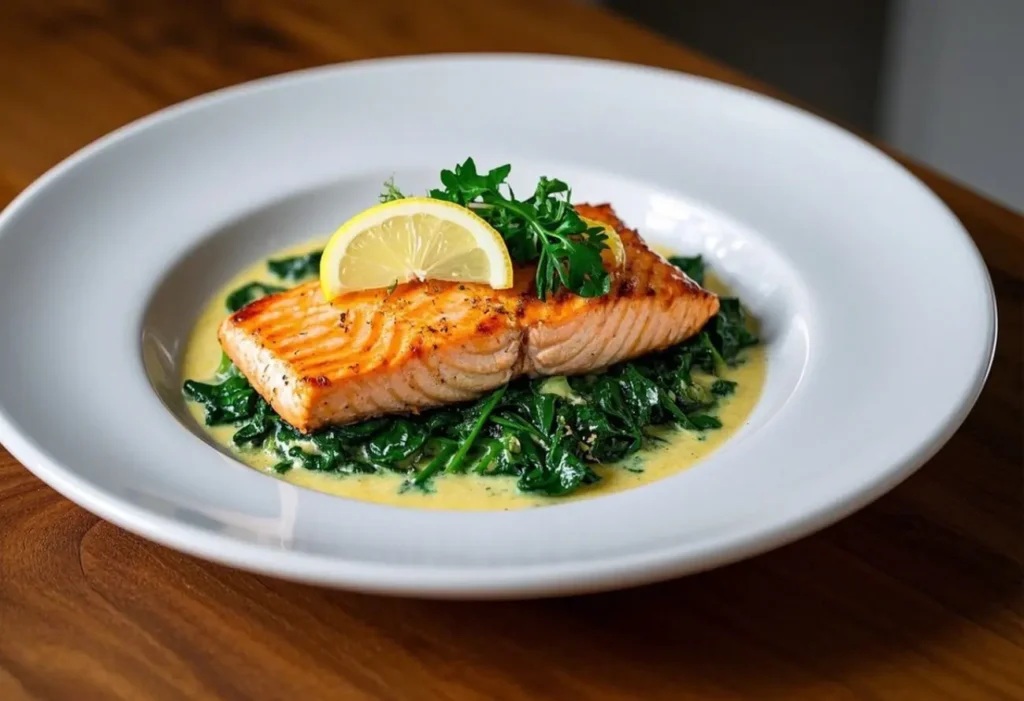
Conclusion
In our relentless modern pace, finding recipes that honor both our nutritional needs and our limited time represents a small victory worth celebrating. This salmon and spinach recipe stands as proof that extraordinary meals don’t require extraordinary effort—just thoughtful ingredient selection and straightforward technique.
By incorporating this 20-minute marvel into your regular rotation, you’re not just solving the immediate “what’s for dinner” dilemma. You’re establishing a sustainable approach to nourishing yourself well, even when time feels scarce. The confidence that comes from preparing restaurant-quality food efficiently spills over into other areas of life, transforming how you view cooking from burden to opportunity.
The next time you find yourself tempted by delivery apps or pre-packaged convenience, remember that this vibrant, nutrient-dense meal awaits with just 20 minutes of your attention. Your body, taste buds, and budget will thank you for choosing this homemade alternative that sacrifices nothing except unnecessary complication.
We’d love to hear about your experiences with this recipe—whether you followed it exactly or incorporated your own creative twists. Consider sharing your results, modifications, or serving suggestions in the comments below. Cooking, after all, evolves through community and shared wisdom.
FAQ About Salmon and Spinach Recipes
Can I use frozen salmon for this salmon and spinach recipe?
Yes, you can use frozen salmon fillets for this recipe. Simply thaw them completely in the refrigerator overnight before cooking. Pat them dry thoroughly before seasoning to ensure proper browning. While fresh salmon typically provides optimal texture, properly thawed frozen fillets work remarkably well, especially when you select vacuum-sealed options that minimize freezer exposure.
How do I know when my salmon is perfectly cooked in this salmon and spinach recipe?
The salmon in this salmon and spinach recipe is done when it flakes easily with a fork but is still slightly translucent in the center. This usually takes 3-4 minutes per side, depending on thickness. The internal temperature should reach 125°F for medium-rare or 145°F for well-done. Remember that salmon continues cooking slightly after removing from heat, so consider this carryover cooking when determining timing.
Can I meal prep this salmon and spinach recipe?
This salmon and spinach recipe works wonderfully for meal prep. Cook as directed, then refrigerate in airtight containers for up to 2 days. Reheat gently in a microwave at 50% power to prevent the salmon from becoming tough. For best results, slightly undercook the salmon initially if you know you’ll be reheating, as this preserves moisture during the second heating process.
What can I substitute for spinach in this salmon and spinach recipe?
If you don’t have spinach for this salmon and spinach recipe, you can substitute kale (cook 1-2 minutes longer), Swiss chard, or arugula. Each will provide different flavors but work well with the salmon. When using tougher greens like kale, consider removing tough stems and tearing leaves into smaller pieces for quicker cooking and more pleasant texture.
Is this salmon and spinach recipe keto-friendly?
Yes, this salmon and spinach recipe is perfect for keto diets as it’s naturally low in carbohydrates (4g per serving) while providing healthy fats and protein. It requires no modifications to fit into a ketogenic meal plan. The combination of omega-3 rich salmon and fiber-filled spinach creates an ideal keto-friendly meal that supports metabolic health while delivering substantial nutrients and satisfaction.

